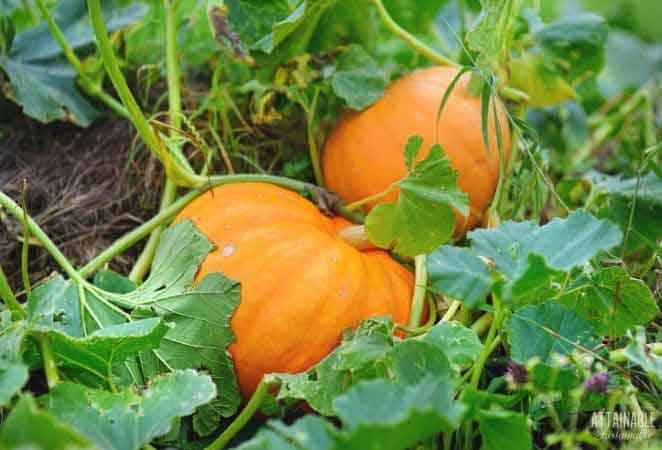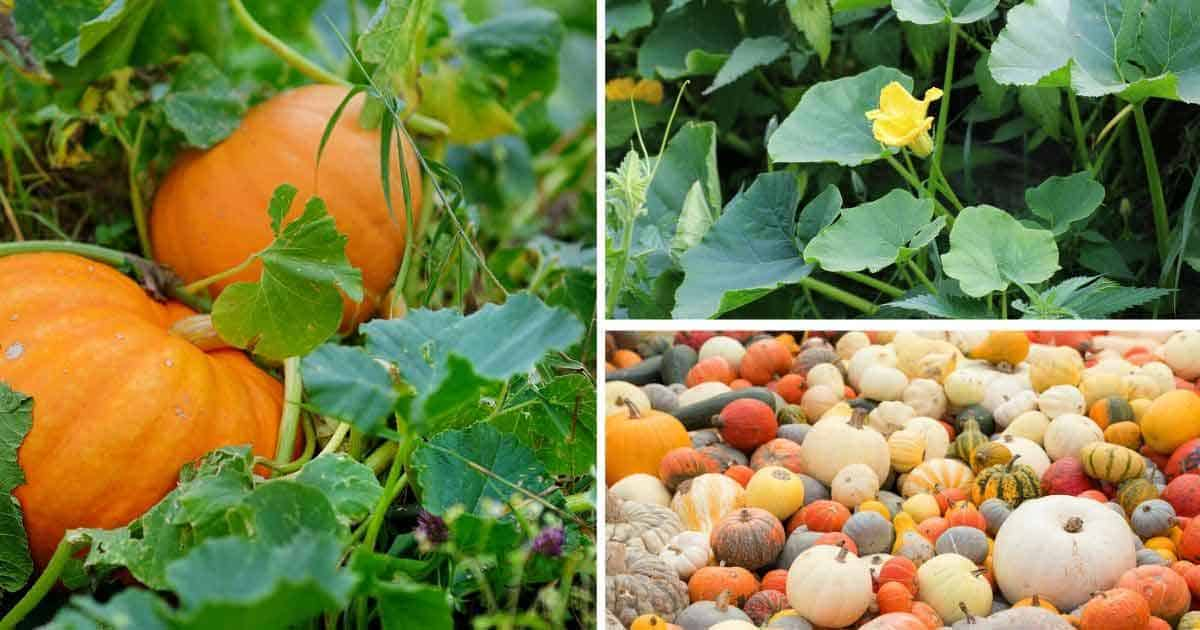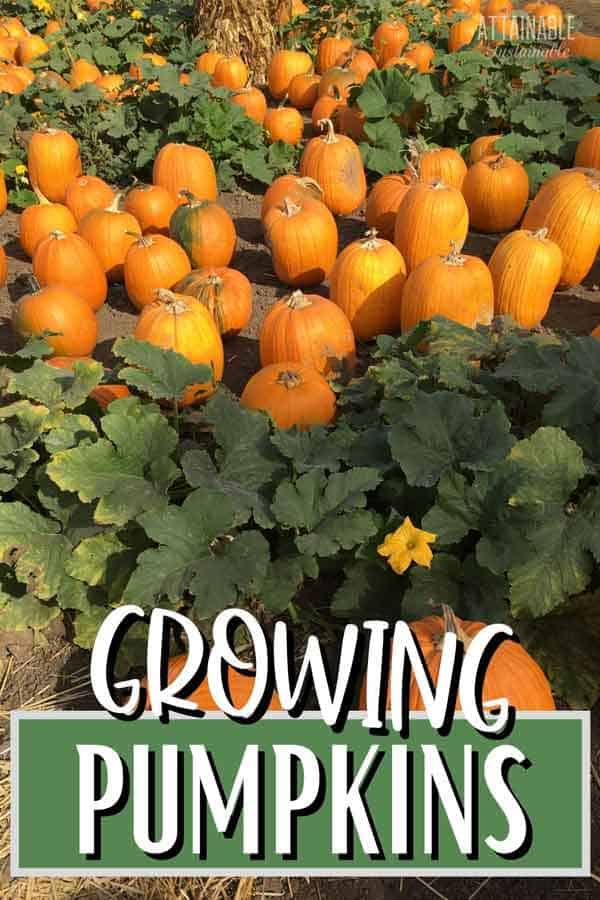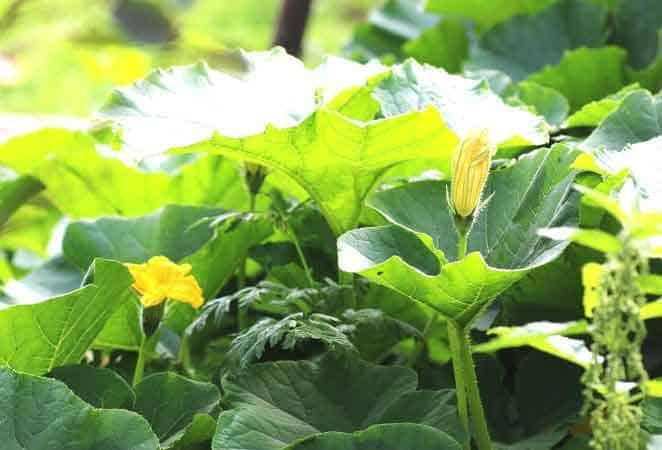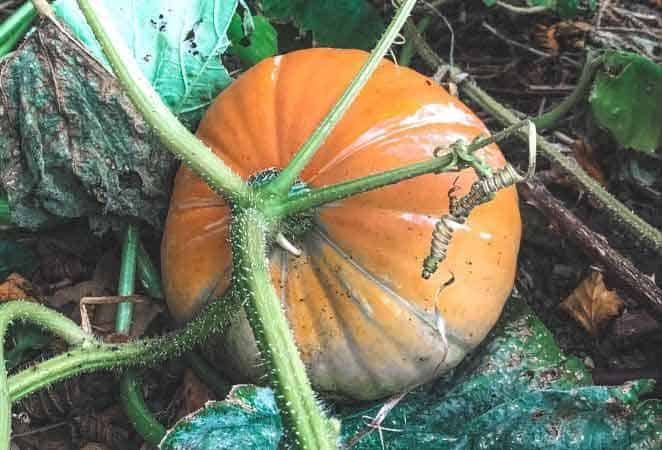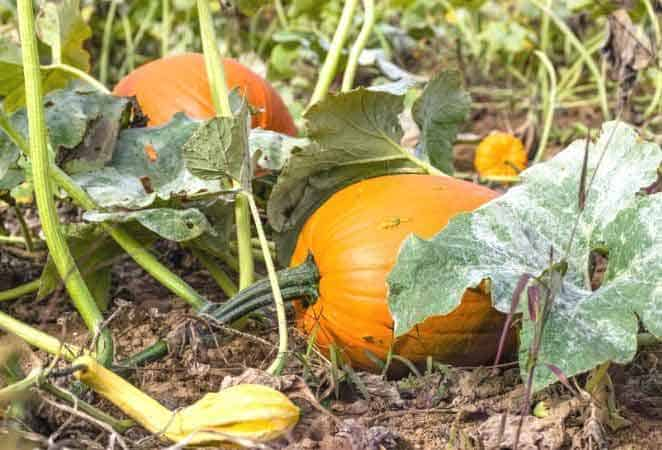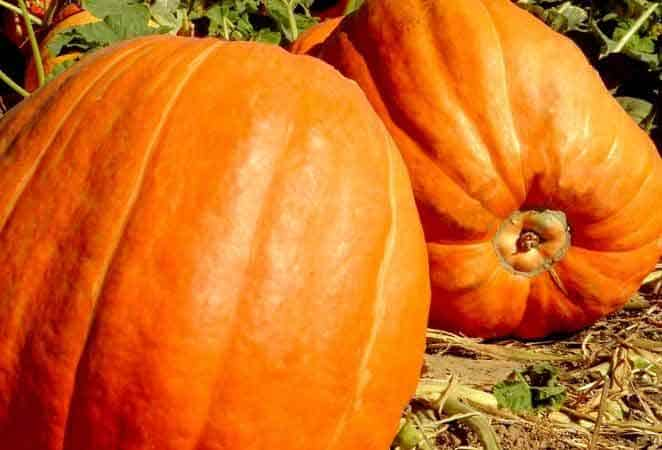Growing pumpkins in your garden provides a delightful harvest that can be used to carve jack-o-lanterns or to put a harvest on the table. It’s a staple crop that can last well into the winter with little effort.
Read about other staple crops you can grow here.
Contributed by Jodi Torpey, author and Master Gardener.
Pumpkins are often carved into jack o’ lanterns for Halloween, but this big orange fruit has a much longer history.
Wild Cucurbita pepo gourds grew wild in South and Central America before being carried further north. It took hundreds of years to develop those gourds into the perfect pumpkins we grow today.
New to gardening? Limited on space? The 5-Gallon Garden gives you the skills you need to grow food in the space you have. Get started with your garden today!
Getting Acquainted with Pumpkins
All pumpkins are warm-season vegetables, but some require a longer growing season than others. Pumpkins grow on long vines, so be sure to allow enough garden space for these plants to spread out or plan to grow them on sturdy trellises.
Grow Some Greens!
Ready to grow fresh greens, no matter WHERE you live? Sign up for my
FREE quick-start guide and start growing some of your own food!
Pumpkins are some of the most popular winter squashes that gardeners like to grow and there are many varieties to choose from. You can grow pumpkins in sizes that range from pint-sized to oddly-shaped giant. Pumpkin colors range from bright orange to striped and even white.
Here are some of the favorite small, medium and large varieties selected as All-America Selections winners:
Small pumpkins
Wee-B-Little. A 1999 winner, these small pumpkins can fit in just about any garden because they grow on bush-type plants. If you have 8 feet of space you can plant Wee-B-Little because small fruits grow on shorter vines; 120 days.
Baby Bear was a vegetable winner in 1993. This small-size sugar pumpkin makes for cute jack o’ lanterns as well as puree for pies. Give these 1.5-2 pound pumpkins space for their vines to grow; 105 days to maturity.
Medium-to-large pumpkins
Pepitas is an ornamental and edible winner from 2016. This variety grows pumpkins that can weigh between 9-12 pounds and with orange-yellow rind and green stripes. The variety name comes from the Spanish word for the seeds that are roastable and edible; 90 days.
Super Moon is a white pumpkin chosen in 2016. Super Moon pumpkins have a smooth outer rind, bright orange interior and can weigh in at 25-30 pounds.
Giant pumpkins
Dill’s Atlantic Giant is the most popular giant pumpkin variety for gardeners. These pumpkins can easily grow to 300-500 pounds without special care, but can weigh over 1000 pounds with the addition of special fertilizers and attention to detail. You’ll need plenty of room for vines that can spread 25 feet or more; 130 days.
How to plant pumpkins
Because pumpkins take a long time to mature, gardeners in cool climates prefer to plant transplants instead of direct sowing seeds in the garden. If you’re starting your own transplants, plant seeds indoors about 4-6 weeks before the average last frost date. As an alternative, plan to purchase transplants from the garden center.
Of course, in warm climates with a long growing season, direct sow when soil is warm and dry enough to work.
Wait for the soil to reach 60-80 degrees before planting. Pumpkins do best when they start in warm soil. Be sure to acclimate (harden off) transplants before planting in the garden by exposing them slowly to sunny conditions for about a week.
Space plants according to the variety, so read seed packets or transplant stakes carefully. In general, plant seeds about ½ to 1 inch deep and about 24-36 inches apart; rows about 48 inches apart. Plant transplants about 12 inches apart in each row.
If you’re planning on growing a giant pumpkin, allow for at least a 10-foot by 10-foot growing area per plant.
Set up a drip irrigation system or a soaker hose to ensure pumpkin plants will get consistent water through the season. Don’t let soil dry out completely. A layer of organic mulch will help maintain soil moisture and eliminate weeds.
Requirements for growing pumpkins
Light requirements
Plant pumpkins in full sun with plenty of space for the vines to spread. Make sure you leave enough room to walk in the garden without harming the vines or fruit. Healthy roots and vines make for healthier plants and a better crop of pumpkins.
Soil requirements
If you want to make sure you’ve got the right garden soil to grow pumpkins, use a soil test to give specifics on what you need to add to amend the soil. If you want to skip that step, start by digging in lots of compost and well-aged manure before planting.
Water and fertilizer requirements
It’s important to grow healthy vines, so keep up with watering but make sure to keep leaves dry to prevent any foliage diseases from developing.
As vines begin to grow, side dress the plants with a nitrogen fertilizer. Sprinkle a dry fertilizer along the rows of plants, about 6-8 inches away from the plants, then carefully rake in so you don’t disturb roots or vines; then water in the fertilizer.
Combatting pests and other problems
You can avoid some pumpkin problems by giving plants plenty of space for air to circulate and to water only at soil level. Check plants on a daily basis to look for common pests and diseases. Look on the undersides of leaves for insect eggs, check plants for insects and check pumpkin stems for problems.
Small yellow and black insects are likely cucumber beetles. These insect pests can strike at any time in the season. Check leaves for little red eggs and spray with insecticidal soap; handpick adults and dispose of them in a bucket of soapy water.
Brownish insects are likely squash bugs that harm plants causing them to wilt and die. Protect against these pests by covering young plants with cover cloth with the edges sealed. Remove cloth when plants start to flower.
Squash bugs also spread a bacterial disease that cause leaves to yellow and suddenly wilt. Row cover cloth can protect against this, too.
Squash vine borer is another pest to reckon with. Look for sawdust-like shavings on the ground and handpick any small white larvae or reddish-brown eggs and destroy.
How to grow pumpkins in containers
Pint-sized pumpkins are perfect for growing in large containers. Plan for one plant in each 5-gallon or larger container and be sure to add a strong trellis for support. Fabric containers are a good option because they allow plant roots to prune themselves to keep from becoming rootbound.
Fill containers with a good quality potting soil, making sure there are holes in the container bottom for drainage. Place container in a sunny spot and plant pumpkins from seeds or transplants when the air and soil temperature are warm.
Mulch around plants to help keep soil cool and moist. Keep up with consistent watering, add a well-balanced fertilizer once or twice a month over the growing season.
Train and tie vines onto the trellis to keep them off the ground. Harvest the small pumpkins just like larger versions, by making sure the rind is hard and leaving a few inches of stem on each when carefully cutting from the vine.
Harvesting pumpkins for storing and cooking
Keep track of the number of days to harvest for the varieties of pumpkins you planted, and use that as a guide for when to harvest.
Pumpkins need to have a hard outer rind before they can be cut from their vines. To test the rind, press your fingernail into the skin; if it resists puncture, the fruit is ready.
Use a sharp knife or pruners to cut fruits from the vine, but leave a length of stem attached. Let fruits cure in a shed or garage for several days to help with long-term storage.
Using pumpkins in cooking
Pumpkins can be stored for several months and used in cooking when needed.
They can be used like any winter squash: baked, cooked and pureed, roasted whole, stuffed and baked, added to soups and stews, and even used in desserts other than pumpkin pie, like these pumpkin muffins or pumpkin custards.
Saving pumpkin seeds
If you intend to save seeds, avoid planting near other species of pumpkins and squashes to prevent cross-pollination.
Save only heirloom seeds, not hybrids because the resulting seeds won’t be the same as the original pumpkin. Cut open the ripe pumpkin, scoop out the seeds, wash them and let them dry thoroughly before storing in a cool, dry place. Be sure to label with the variety and any growing notes for next season.

